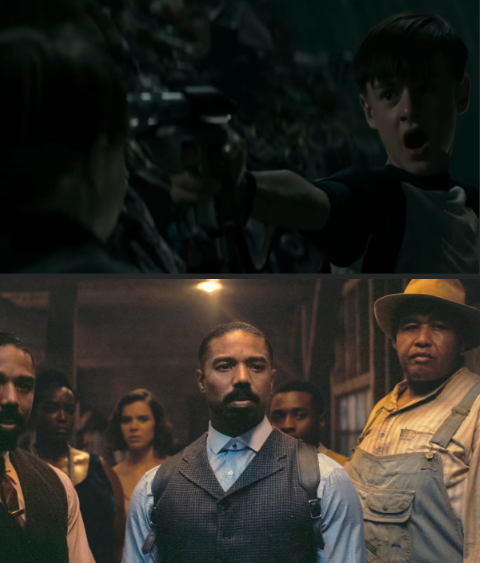Before anyone presses play on a horror movie, we already carry a whole backpack of expectations. We know the shadows will matter more than the light, that the sound design is half the villain, and that someone will eventually walk toward the one door they absolutely shouldn’t open. Horror teaches us its grammar long before we study it tension, threat, release; fear that creeps, jumps, or crawls under the skin. Even without watching today’s films, we know to brace ourselves.
Now, when we hold Sinners (2025, Ryan Coogler) beside IT (2017, Andrés Muschietti), the similarities glow immediately. Both orbit fear rooted in childhood traumas we bury but never quite outrun. Both build their worlds through atmosphere, dread, and the sense that something larger, darker, and not entirely describable is pulling the strings. Stylistically, both directors understand the power of pacing: slow burns, quiet beats that break violently, and characters whose inner lives shape how the horror manifests. We care about the characters before we get jump scared.
But their differences shape their identities.
IT leans into supernatural spectacle a shape-shifting entity and imagery that bends the real world. Its horror is loud, surreal, intentionally exaggerated, the kind that fills the screen with monstrous invention. Muschietti embraces color, movement, and the heightened fantasy of Stephen King’s writing.
Sinners, by contrast, is rooted in social and psychological realism. Coogler’s style is more grounded, more spatially intimate, weaving fear through cultural history, generational pain, and moral tension. Saying himself that the movie is really an ohmage to the genre of Blues music. Where IT externalizes fear into a creature, Sinners turns the knife inward the horror grows out of human choices, legacies, and the systems that shape them. Coogler’s visual language tends to be heavier, slower, and more symbolic, drawing horror out of the real world’s fractures rather than the supernatural.
How they each demonstrate Modus Legend?
IT (2017)
The film teaches us early to read fear symbolically. Pennywise doesn’t just scare he mirrors the characters’ deepest vulnerabilities. The mode of reading here is allegorical: every grotesque scene doubles as a metaphor for growing up, trauma, and the loss of innocence. We learn to read the monster not as a clown, but as everything the children fear but cannot name.
Sinners (2025)
Coogler guides us toward a socio-moral reading. From the cinematography to the dialogue, the film teaches its audience to interpret events through systems of power, community, race, and responsibility. The horror is not just “what happens,” but what the world allows to happen how institutions, histories, and sins (literal or metaphorical) shape individuals. Its Modus Legend pushes us to connect symbolism to real social structures, not just personal emotion.
Both films uphold the core grammar of horror, but their Modus Legend tells us how to interpret their worlds: one through mythic fear, the other through lived reality.

Provide Feedback